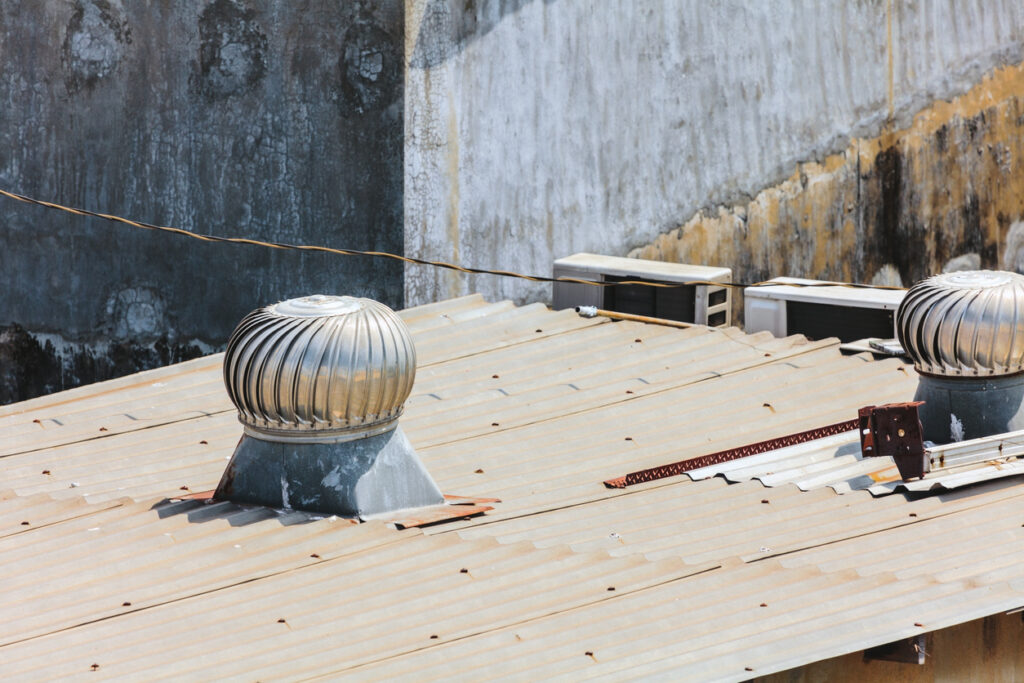Commercial roofing systems are exposed to various harsh environmental factors, including wind uplift, which can pose significant risks to their structural integrity and performance. Wind uplift occurs when air pressure below the roof exceeds that above it, causing the roof to lift and potentially detach from the building. To mitigate the risks associated with wind uplift, property owners and roofing professionals must implement effective strategies to strengthen commercial roofing systems. This article explores various techniques and best practices for bolstering the resilience of commercial roofs against wind uplift, ensuring the safety and longevity of commercial properties.
Understanding Wind Uplift
Wind uplift is a common phenomenon that occurs during high-wind events, such as storms, hurricanes, and tornadoes. The force of the wind creates a pressure differential between the interior and exterior of the building, exerting upward force on the roof surface. This uplift pressure can exceed the roof’s design capacity, leading to roof membrane damage, fastener pullout, and even roof failure in severe cases. Therefore, it is crucial for property owners to take proactive measures to mitigate the risks associated with wind uplift and protect their investment in commercial roofing systems.
Factors Affecting Wind Uplift
Several factors can influence the susceptibility of commercial roofing systems to wind uplift, including the design of the roof, the quality of materials and installation, and local weather patterns. Roof shape and slope dictate how wind flows over and around the roof, influencing the distribution of uplift forces. For example, flat roofs are more prone to wind uplift compared to sloped roofs, as they present a larger surface area for wind to exert pressure. Additionally, the presence of obstacles such as adjacent buildings or tall structures can disrupt airflow patterns and create areas of high pressure, further increasing the risk of wind uplift.
High-quality roofing materials that are specifically designed to withstand wind uplift, such as impact-resistant shingles or reinforced membranes, can provide greater durability and protection against wind damage. Likewise, proper installation techniques, including the use of appropriate fasteners, adhesives, and flashing details, are essential for ensuring the integrity of the roof assembly and minimizing the risk of wind-related issues.
Local weather patterns also influence the susceptibility of commercial roofing systems to wind uplift. Regions prone to frequent high-wind events, such as coastal areas or tornado-prone regions, require roofing systems that are designed and constructed to withstand extreme wind loads. Understanding the prevailing wind patterns and environmental conditions in a particular area is crucial for selecting the appropriate roofing materials and design features to enhance the wind resistance of commercial roofs.
Strategies for Strengthening Commercial Roofing Systems
To enhance the resilience of commercial roofing systems against wind uplift, property owners and roofing professionals can implement a variety of strategies and best practices:
- Proper Roof Design: Designing commercial roofs with adequate slope and drainage can help minimize the risk of wind uplift by allowing water to flow off the roof surface more effectively. Additionally, incorporating features such as parapet walls, roof curbs, and roof-to-wall connections can enhance the overall stability of the roof structure.
- High-Quality Materials: Choosing high-quality roofing materials that are specifically designed to withstand wind uplift is essential for ensuring the long-term performance of commercial roofing systems. Impact-resistant shingles, reinforced membranes, and metal roofing panels are examples of materials that offer superior durability and wind resistance.
- Robust Roofing Systems: Utilizing robust roofing systems, such as fully adhered membranes or mechanically attached systems, can help improve the overall wind resistance of commercial roofs. Proper installation techniques, including the use of appropriate fasteners and adhesives, are critical for ensuring the integrity of the roof assembly.
- Testing for Moisture Intrusion: Regular testing for moisture intrusion is essential for detecting and addressing any damage caused by past wind uplift, thereby preventing potentially costly repairs and maintaining the integrity of commercial roofing systems. When wind uplift occurs, it can compromise the integrity of the roofing assembly, creating openings or vulnerabilities that allow moisture to infiltrate the roof structure. Over time, moisture intrusion can lead to a host of problems, including rot, mold growth, and structural damage, if left unchecked.
- Regular Inspections and Maintenance: Regular inspections and maintenance are essential for identifying and addressing potential weaknesses in commercial roofing systems before they escalate into costly damage. Inspecting roof seams, fasteners, flashings, and other vulnerable areas can help detect signs of wind uplift damage early on, allowing for timely repairs and reinforcement.
Comprehensive Testing Services
Mitigating the risks associated with wind uplift is essential for ensuring the long-term durability and performance of commercial roofing systems. By implementing effective strategies such as high-quality materials, moisture intrusion testing, and regular inspections and maintenance, property owners and roofing professionals can strengthen commercial roofs against wind uplift and protect their investment.
CORE Forensics offers comprehensive testing solutions to help property owners mitigate the risks associated with moisture intrusion, particularly in the aftermath of wind uplift events. Our wind uplift machine simulates the effects of high winds on roofing systems by subjecting them to controlled wind pressures. This enables us to assess how different roofing materials, configurations, and attachment techniques perform in actual wind scenarios. Using precise instrumentation and data acquisition systems, the machine measures and analyzes factors such as uplift forces, deflection, and points of failure.
By partnering with CORE Forensics for regular testing and maintenance, property owners can ensure the long-term performance and durability of their commercial roofing systems, providing peace of mind and protection against the impacts of moisture intrusion. Contact us today to learn more about our moisture intrusion testing services and how we can help safeguard your commercial property against water damage.

